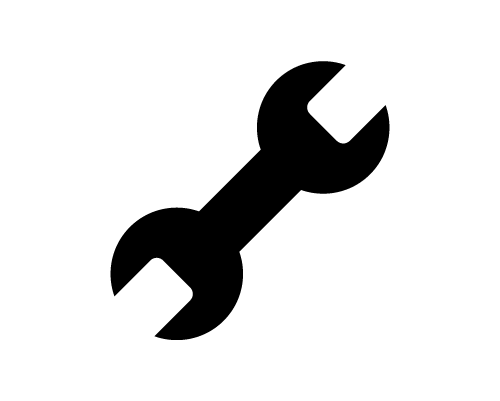The Ins And Outs Of Hermaphrodite Cannabis Plants
Published :
Oct 12, 2016
Categories :
Strain information

Hermaphrodite cannabis plants are not something you ever want to randomly find in your garden. Hermaphrodites are typically female plants who due to genetics or stress, form male sex organs. There are a number of causes but in the end, if a plant in your garden becomes a hermaphrodite, you could end up with a world of problems. The unintended consequences of environmental issues could end up littering your crop with seeds.
BIOLOGY
 As with the vast majority of lifeforms on this planet, cannabis plants fall into two genders, male and female. The beautiful sweet buds you smoke are the flowers of the female plant. Males are typically only used for breeding purposes. The flower of the male resembles a tiny bunch of bananas. The banana looking sacs contain the pollen that will go on to fertilize the female plants. After the pollen from the male reaches the pistil of the female, the fertilization process begins. Once fertilized, the female will produce seeds. Now if the breeding is done under carefully controlled circumstances in a sterile environment, the seeds you recover will grow into a hybrid of the two parent plants. A new strain will in effect be born. This is the process by which all of the beautiful seeds you purchase are crafted.
As with the vast majority of lifeforms on this planet, cannabis plants fall into two genders, male and female. The beautiful sweet buds you smoke are the flowers of the female plant. Males are typically only used for breeding purposes. The flower of the male resembles a tiny bunch of bananas. The banana looking sacs contain the pollen that will go on to fertilize the female plants. After the pollen from the male reaches the pistil of the female, the fertilization process begins. Once fertilized, the female will produce seeds. Now if the breeding is done under carefully controlled circumstances in a sterile environment, the seeds you recover will grow into a hybrid of the two parent plants. A new strain will in effect be born. This is the process by which all of the beautiful seeds you purchase are crafted.
If you harvest your crop and find seeds yet had no male plants in the room, the reality is that at least one of your plants became hermaphroditic. In your cannabis garden, this is one of the biggest concerns that you want to avoid. Seeds ruin a good crop, that's all there is to it. If a grower keeps male plants on hand for breeding purposes, they keep them far from their flowering female plants and treat them with utmost care. To prevent the unwanted pollination of their females, strict contamination procedures are typically followed. Having a hermaphrodite plant in your garden poses the same problems that keeping a male around can cause.
Hermaphrodite plants are not always the enemy however. For ninety-nine percent of us, they will be, but if you are a breeder, hermaphrodites can be your friend. Hermaphrodite plants are used to create feminized seeds. By crossing your females with a hermaphrodite with male pollen sacs, you increase the chances of the offspring being feminized up to 70%.
CAUSES OF HERMAPHRODITIC CANNABIS PLANTS
 Your cannabis plants can become hermaphroditic for a number of preventable reasons. If you happen to plant hermaphroditic seeds and didn't know it, there isn't much you can do about it. You simply can't fight bad genetics. If on the other hand you find one or more female plants in your garden sprouting male sex organs, you probably had an environmental issue that you may or may not have been aware of. Your plants become hermaphroditic as a last ditch effort to survive by self-pollinating. For them to turn to this drastic measure, they must have encountered a level of stress that would indicate to them that their demise is near.
Your cannabis plants can become hermaphroditic for a number of preventable reasons. If you happen to plant hermaphroditic seeds and didn't know it, there isn't much you can do about it. You simply can't fight bad genetics. If on the other hand you find one or more female plants in your garden sprouting male sex organs, you probably had an environmental issue that you may or may not have been aware of. Your plants become hermaphroditic as a last ditch effort to survive by self-pollinating. For them to turn to this drastic measure, they must have encountered a level of stress that would indicate to them that their demise is near.
This stress can come in a number of forms, however the single biggest environmental factor that leads to hermaphroditic plants is an interruption of the twelve hour light cycle. If you have electrical problems or a bad ballast, you may inadvertently affect the light cycle enough to cause male sex organs to form on your otherwise beautiful plants. Interruption of the light cycle has to occur for more than just a few hours. Days of erratic light patterns or twenty-four hour light can trigger hermaphroditism and can ultimately return your plants to a vegetative state.
As stress can come in a variety of forms, there are common mistakes growers make that can be avoided. Exposing your plants to excessive heat can to lead to adverse reactions including hermaphrodite development. Physical stress can also cause this problem. Broken branches, excessive pruning, and root damage can cause an adverse level of stress. Any of these stressors, as well as pests, phytotoxicity and fertilization problems can result in hermaphrodite plants in your garden. Waiting too long to cut down your plants can also have this effect, however with most growers eyeing the clock till harvest, you probably won't encounter this problem.
HOW TO HANDLE
 If you are able to track down a hermaphrodite in your garden, you need to approach it with caution. Any jostling or movement of the plant risks spreading pollen to other plants. The first thing you need to do is kill all your fans and circulation. This reduces the risk of pollen transferring throughout the room on the air. Kill your A/C or HVAC and do your best to isolate the plant. If you can move surrounding plants to create room around the culprit, you reduce the chance of spreading pollen to the plants in the immediate area. This might seem a little much for one or two male flower sites, but better safe than sorry.
If you are able to track down a hermaphrodite in your garden, you need to approach it with caution. Any jostling or movement of the plant risks spreading pollen to other plants. The first thing you need to do is kill all your fans and circulation. This reduces the risk of pollen transferring throughout the room on the air. Kill your A/C or HVAC and do your best to isolate the plant. If you can move surrounding plants to create room around the culprit, you reduce the chance of spreading pollen to the plants in the immediate area. This might seem a little much for one or two male flower sites, but better safe than sorry.
If you can remove the tiny banana pollen sacs with tweezers or your fingers, you may be able to save your crop. If the problem is more than just a handful, carefully place a plastic bag over the entire plant and remove it from the area. You don't want to take a chance with your females. All it takes is one specimen to ruin an entire seasons worth of work. If you find that you did wait a little long to cut down your babies, this isn't the end of the world. It's a little late for the flowers to start the fertilization process, so just cut them down and process them as you normally would.
So if you find a herming plant in your garden, its not the end of the world. Catching it early and isolating it from the rest of your garden is the right way to handle it. Maintaining your environment is crucial in avoiding the tendency for your plants to turn into a hermaphrodite. By keeping an eye on your light cycles and maintaining the general health of your plants, you drastically reduce the chance of your garden turning on you.






































